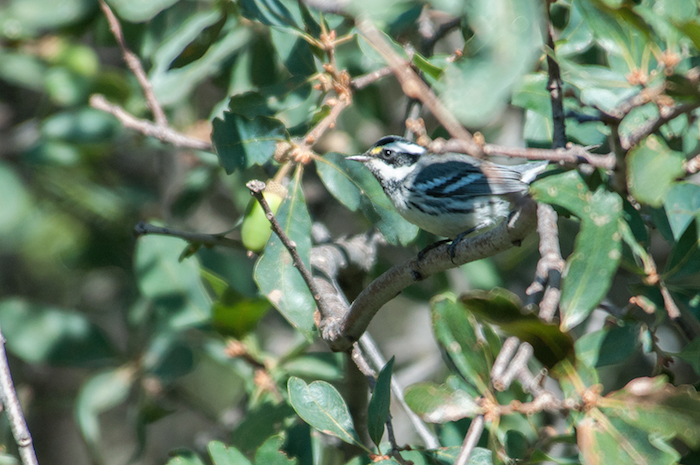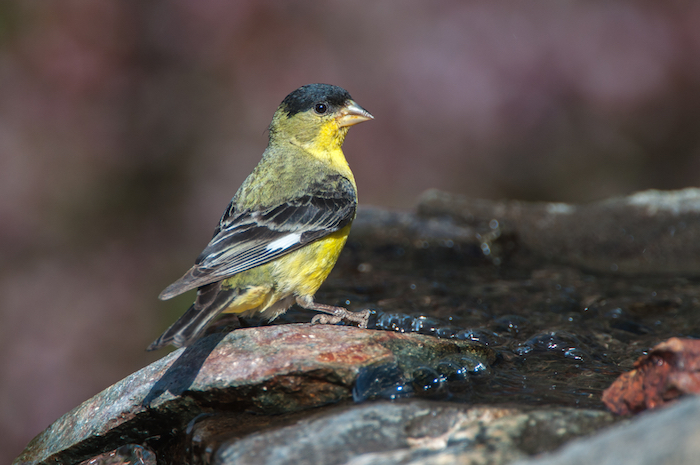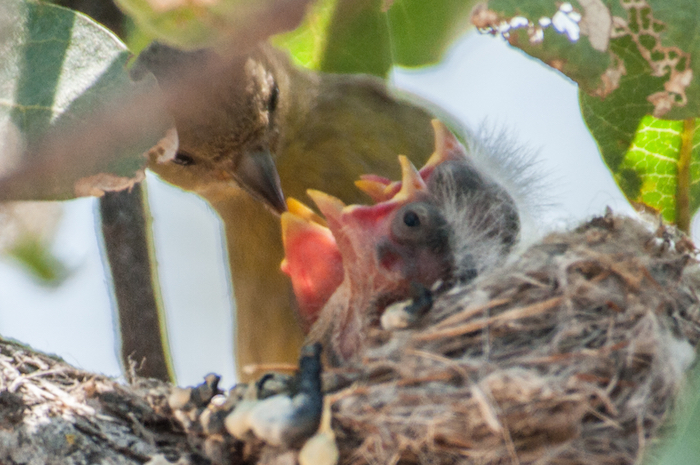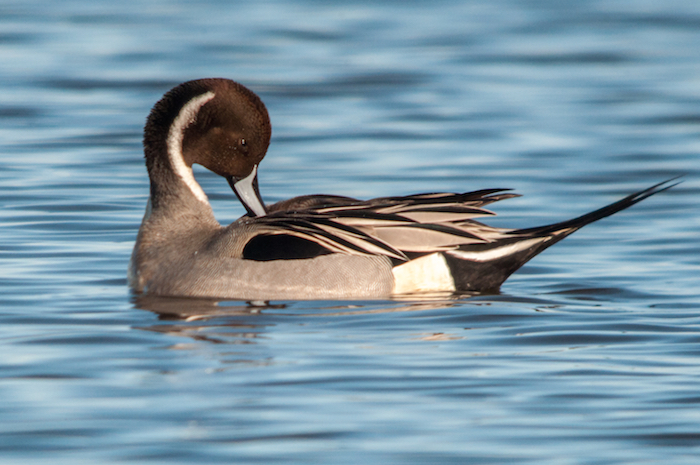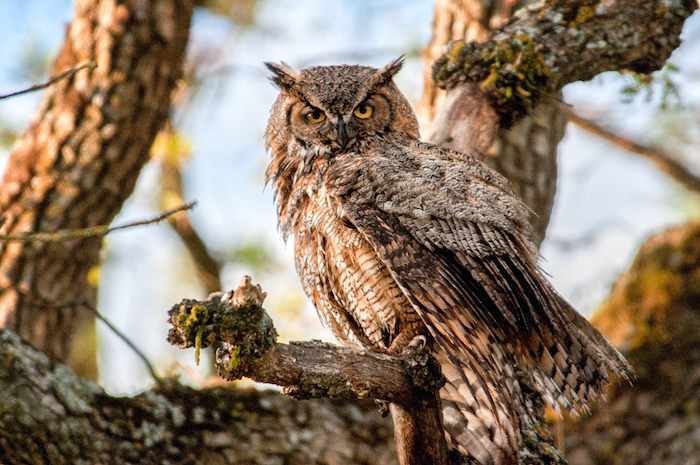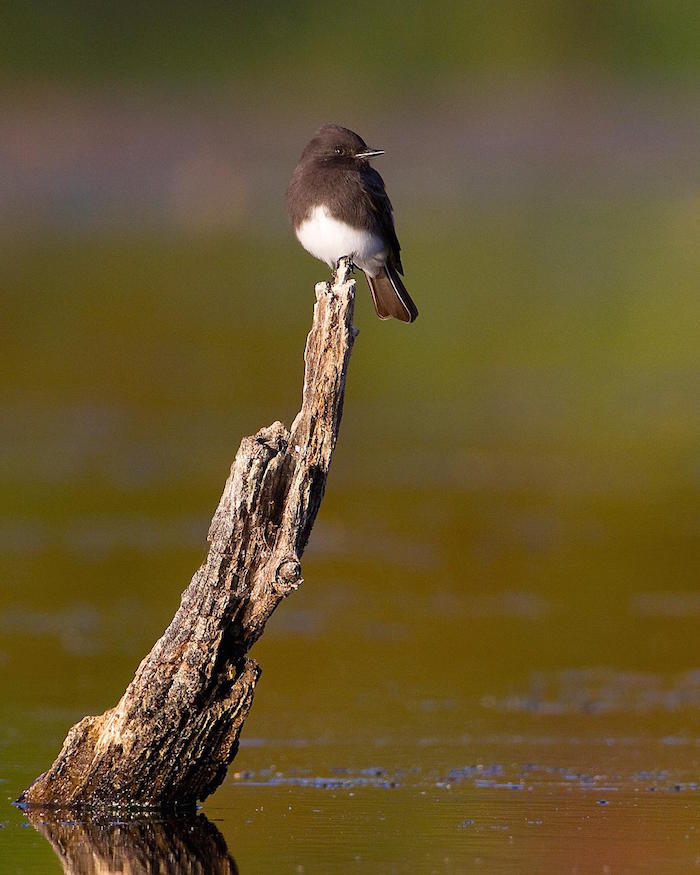
Black Phoebe photo courtesy of David Bogener
Winter is not traditionally mosquito-buzzing or cricket-singing season. The bugs lie low, not with summer music but tucked mutely into a puddle or under a log or leaf, usually as eggs or larvae or pupae. They wait for the revolving Earth to point us sunward, waking them up and rousing the crescendo of photosynthesis that prospers life seasonally all over the planet’s surface.
Songbirds, of course, know these seasons at an instinctual level. Our summer birds head south to sunnier latitudes not to keep warm but to keep in grub. Flycatchers, who snag six-legged prey right out of the air for breakfast, lunch, and dinner, are particularly reactive to insect dormancy. Customarily, they enjoy Acapulco or similar resort destinations this time of year.
But there’s always a nonconformist. Come drenching winter rains, pounding hail, hard frosts, and coats of snow, one little flycatcher finds a way to live through winter right here in Northern California. The black phoebe is one of our pluckiest neighbors.
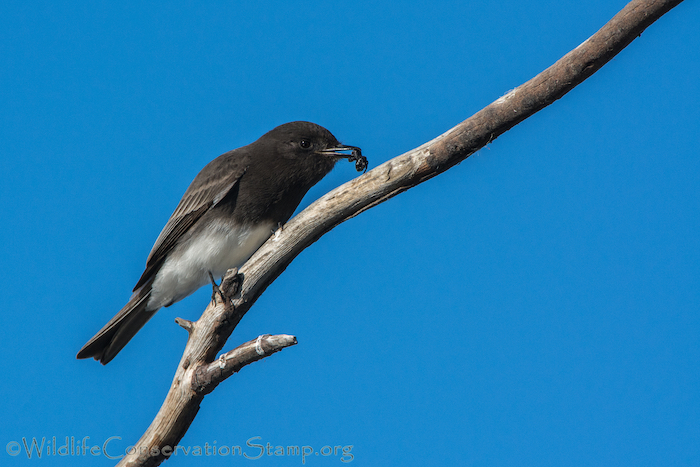
They are no shrinking violets, nor much vegetative at all. Although scarcely the length of your handspan, and dressed in buttoned-down black-and-white, they engage life with redoubtable effervescence. They abundantly sing out their name, phoe-be, phoe-be! as if announcing nature’s vitality on even a frosty morning. They fly-catch when flies—or moths or mosquitoes—are few and far between, and expand their hunt to snatch prey from blades of grass or the surface of ponds. They flick their tails incessantly as if life simply requires dancing. They wear just a hint of a punk ‘do in their headfeathers, just enough to keep more sedate heads wondering.
And they not only survive, they flourish. When spring comes with readier food supplies, pairs reunite, and the male takes his mate on a tour of possible nest sites, fluttering enticingly under bridges or shady eves, or in the cleft of a tree-sized boulder. She chooses a spot and builds a nest, a half-bowl of mud plastered to the selected vertical surface—possibly refurbishing a site that the pair used in prior years.
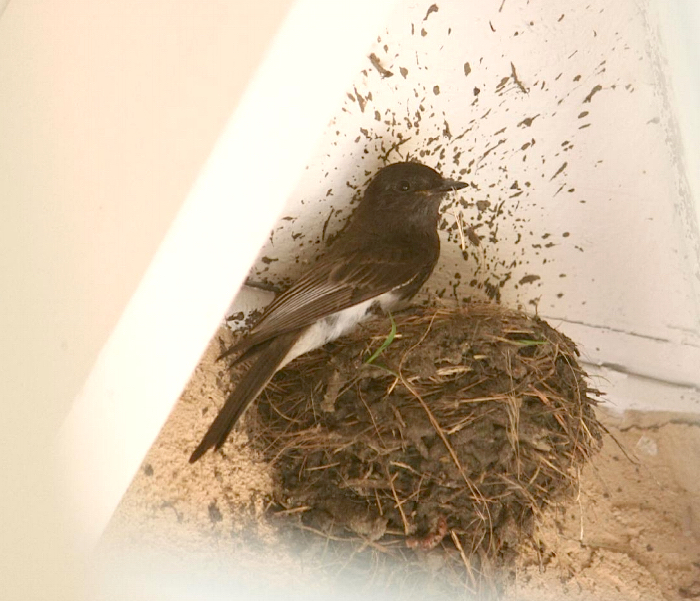
Phoebes defend their turf, chasing off other insectivores and reserving the local winged protein for themselves and their nestlings. But plucky is not foolhardy. They will generally flee a hunting hawk. Still, they are known to harass a fox or cat, and have been observed chasing jays thrice their size to protect their helpless young.
Black phoebes have done well with people. As long as water is nearby, with its provision of insects for eating and mud for nesting, human development has multiplied the vertical surfaces that make continuing life possible for this hardy neighbor of ours. Keep an eye and an ear out: there is likely a clear “phoe-be, phoe-be” near you!

